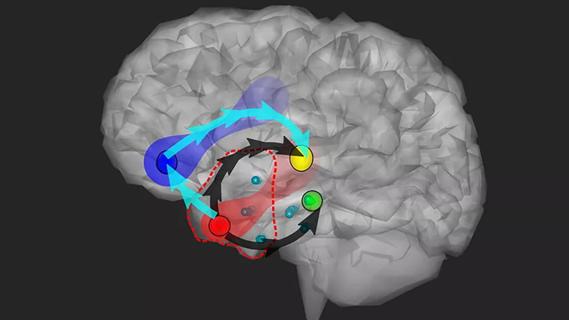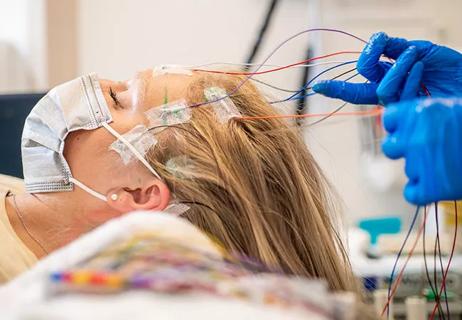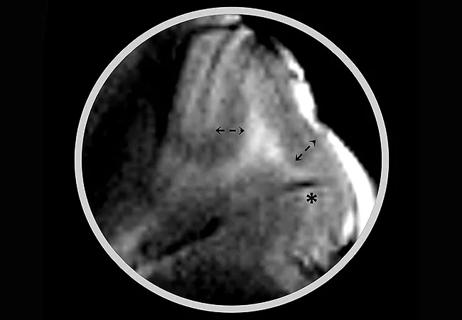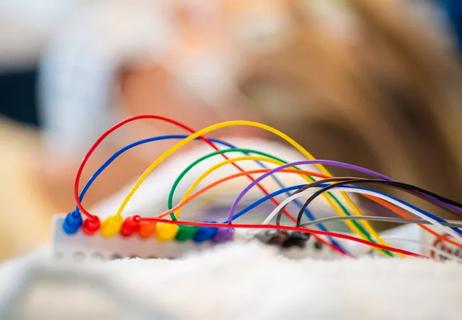Prediction models in use at Cleveland Clinic, openly available to all

The high efficacy of temporal lobe resection (TLR) as a treatment for pharmacoresistant epilepsy is countered by a significant risk of postoperative cognitive decline occurring in 20% to 30% of patients. Despite a multitude of risk factors for cognitive loss following TLR identified in previous studies, calculating these risks at the individual level remains challenging. In response, Cleveland Clinic researchers developed a set of easy-to-use nomograms to better inform patients considering TLR for epilepsy about their individualized risk for postoperative declines in naming and mood, and these researchers recently published in Neurology (2021;97[3]:e263-e274) results of a retrospective study to develop and validate additional models and nomograms to predict postoperative verbal memory outcome.
Cleveland Clinic is a non-profit academic medical center. Advertising on our site helps support our mission. We do not endorse non-Cleveland Clinic products or services. Policy
Risk factors that contribute to post-TLR memory loss — e.g., dominant-side surgery, stronger preoperative memory, older age at seizure onset, older age at time of surgery, absence of hippocampal sclerosis — are often contradictory (e.g., strong preoperative memory in the context of mesial temporal sclerosis), making it difficult to weigh them against each other in clinical practice. “Very few studies have tried to incorporate all these factors together,” says the study’s lead investigator, Robyn Busch, PhD, a clinical neuropsychologist with Cleveland Clinic’s Charles Shor Epilepsy Center.
An added challenge is that many previous outcome studies have looked at group-level data. “For a patient, it is not particularly helpful to know what proportion of patients decline on average,” says Dr. Busch. “Instead, you want to know what your risk is as an individual. That was our goal, to develop individual models that provide more specific information, given each patient’s unique characteristics.”
Nomograms — calculation tools designed to allow clinicians to evaluate the collective risk of multiple factors at once — are new to the surgical setting in epilepsy. The main objective of the current study was to develop specific models for prediction of decline in delayed verbal memory recall following TLR for epilepsy on an individual basis. Variables were selected to reflect the best combinations of predictors to represent the patient samples, including:
“We took all the most relevant variables shown in prior research to be related to memory outcomes and put them into statistical regression models to see what would be the best combination of variables to most accurately predict outcomes across the three memory measures we used,” Dr. Busch explains. “One of the goals was to keep our models simple, with easily accessible variables, so that almost any epilepsy center would be able to use them.”
A total of 359 patient cases were selected from older adolescents and adults who underwent surgical resection for epilepsy at Cleveland Clinic from 1988 to 2018. Another 290 cases were included for a validation cohort from five other centers in the U.S. and Canada. Participants in both cohorts completed three widely used tests of verbal memory — the Rey Auditory Verbal Learning Test (RAVLT) and two subtests of the Wechsler Memory Scale (Third Edition), Logical Memory and Verbal Paired Associates — both before and approximately six to 12 months after surgery.
Significant decline was observed on at least one of the three verbal memory tests in 29% of the initial development cohort and 26% of the validation cohort.
With the RAVLT, the factors providing the best predictive accuracy for memory decline were side of surgery, baseline RAVLT score and whether or not the hippocampus was resected, with higher risk for decline associated with dominant-side surgery, higher baseline scores and hippocampal resection. With the other two tests, surgery side and baseline memory score were likewise the strongest predictors, along with education level (higher levels conferring lower odds of decline) in lieu of hippocampal resection.
These nomograms are currently used at Cleveland Clinic, Dr. Busch notes, and are openly available to any clinicians who want to use them for individualized risk assessment of patients considering TLR. The verbal memory nomograms are provided in Figures 3 to 5 in the published study, and risk calculators for verbal memory, naming and mood outcomes are available online, where the data for a given patient can be directly input to receive risk calculations automatically.
The current models are exclusive to resective surgery for temporal lobe epilepsy, which presents the highest risk of cognitive morbidity. Dr. Busch says nomograms for other types of resective surgeries (e.g., for frontal lobe epilepsy) or for less-invasive types of temporal lobe epilepsy surgery (e.g., laser ablation) are possible in the future.
“The current models have been developed to estimate risk of any clinically meaningful postoperative decline,” she says. “I’d like to expand their use to estimate the magnitude of postoperative decline as well as the functional impact of that decline on day-to-day functioning. We picked the areas of cognition that are most likely to change, but there are other, more nuanced applications we may examine in the future.”

Study combines intracranial electrophysiology and SPECT to elucidate the role of hypoperfusion

Characterizing genetic architecture of clinical subtypes may accelerate targeted therapy

Many patients unnecessarily continue the medications for years

Pre-retirement reflections from a pioneering clinician, researcher and educator

ILAE advises emphasizing options for patients with drug-resistant epilepsy

Mounting support for the newly described microstructure from a 7T MRI and electroclinicopathologic study

Confirming the diagnosis is only the start of the journey

The neuroactive steroid significantly reduces seizures related to CDKL5 deficiency disorder